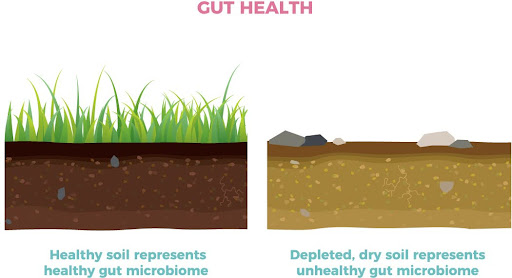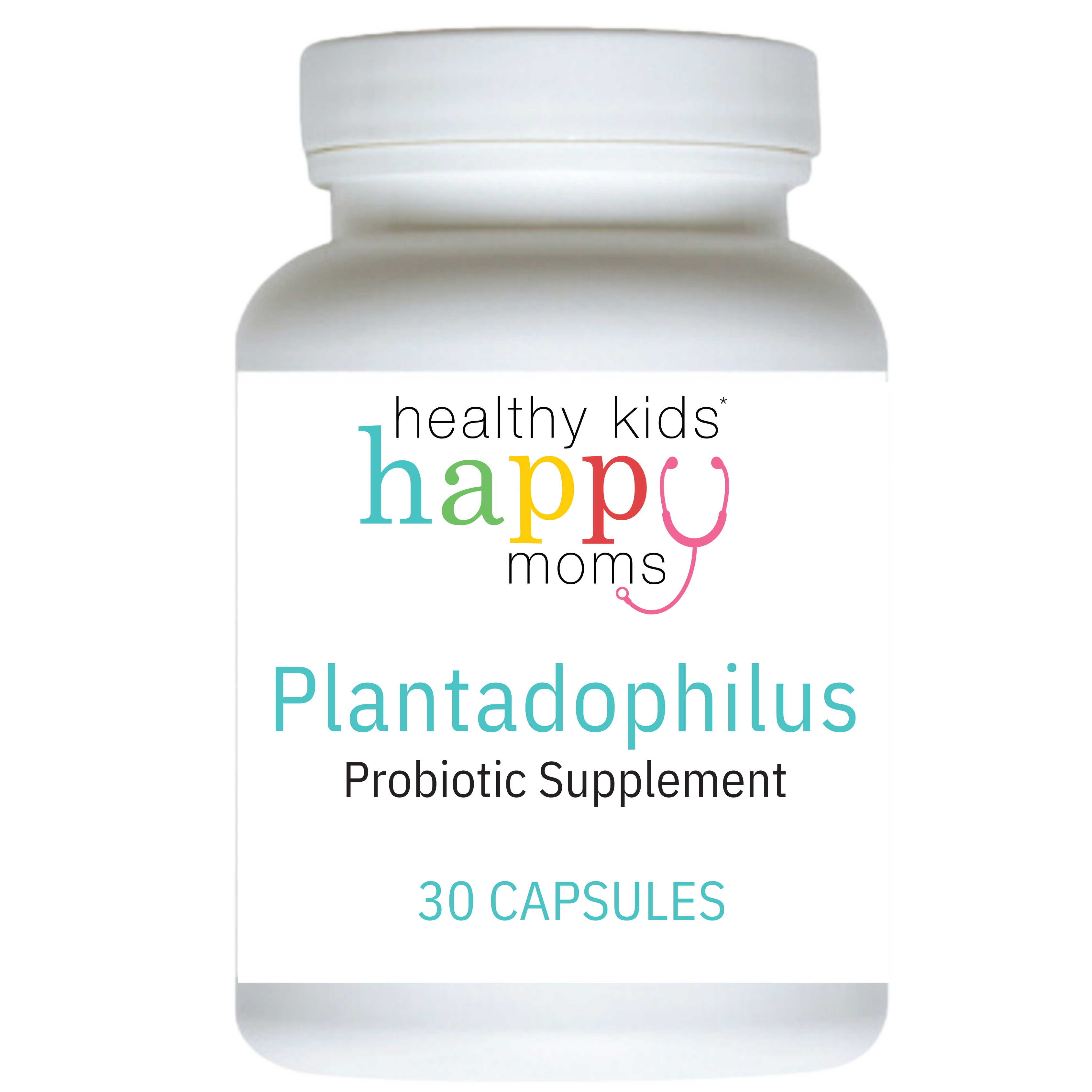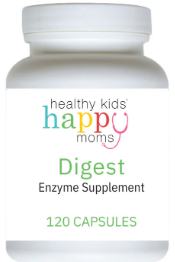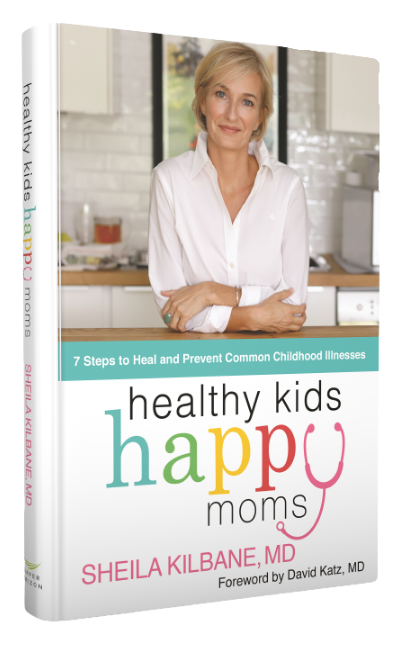I’ve often shared the three things I wish I’d learned in medical school about treating eczema: the importance of the gut microbiome, the skin microbiome, and nutrition.
In this blog, I’m going to take more of a deep dive into the relationship between eczema and gut health.
Eczema (and other skin conditions) is a reflection of what’s happening inside the body, not just what’s happening externally on the skin.1
Remember, about 70% of the immune system happens in the gut, and what is happening in the gut impacts the skin.
For that reason, a key component of our integrative approach to treating eczema is to look at the gut microbiome. An imbalance in the gut microbiome can manifest in many different ways, including a leaky gut, which contributes to skin conditions such as eczema.
What is a leaky gut, and what does it have to do with eczema?
Leaky gut is a condition where the lining of the gut becomes too permeable and allows undigested food particles, allergens, and toxins to leak into the bloodstream, causing inflammation throughout the body and a weakened immune system.
This systemic inflammation is often what triggers eczema flare-ups, making it essential to address gut health in order to manage eczema effectively.
This graphic from my book, Healthy Kids, Happy Moms, illustrates just how impactful a leaky gut, and subsequently unchecked inflammation, can be.

I use the analogy of soil to explain how the gut works.

Just like healthy, nutrient-rich soil produces strong, thriving plants, a healthy gut creates the right environment for overall wellness—including skin health.
Take a look at the list below of factors that may impact our gut microbiome. How many apply to you or your child?
- Poor-quality processed foods.
- Hand sanitizers and strong cleaning agents with bleach.2 Living in such a sterile environment may actually be impacting the diversity of bacteria in our gut and therefore our overall health (referred to as the hygiene hypothesis).3
- Herbicides (containing glyphosate) that kill weeds and microorganisms in the soil.4
- Antibiotics that kill bacteria causing an infection but also kill the beneficial bacteria in the gut.5
- Antibiotics used in food-producing animals.6
- The high C-section rate in the US, in which the baby does not ingest the beneficial Lactobacillus bacteria from the wall of the vagina.7
How do we restore and maintain a healthy, diverse microbiome?
Here are a few powerful ways to provide the gut with the key nutrients and bacteria needed to operate optimally and foster a strong immune system, all of which support the eczema healing process:
🥦 Eat a Whole Foods Diet: Focus on incorporating plenty of whole, unprocessed foods, such as fruits, leafy green vegetables, and clean protein sources like salmon (full of healthy Omega-3 fats).
If you’re just starting on your integrative journey, I encourage you to do a trial off dairy because it is such a common culprit for inflammation in kids (see chapter 7 of my book for further information).
💧 Stay Hydrated: Drinking plenty of water is essential for digestion and maintaining a healthy gut lining.
Proper hydration also supports the body’s natural detoxification process and helps manage eczema flare-ups.
🦠 Diversify the Microbiome: Our best-selling HKHM Plantadophilus is a gentle, yet robust single-strain probiotic that is safe for those even with the most sensitive stomachs.
It helps replenish the good bacteria needed for optimal digestion and immune function, both of which play a critical role in reducing eczema symptoms.

💥 Support the Body’s Ability to Breakdown & Absorb Food: Undigested proteins contribute to GI issues such as gas, bloating, and constipation or loose stools, as well as systemic inflammation which makes common childhood illnesses worse (eczema, chronic runny nose, recurrent ear and sinus infections, reflux, asthma, and allergies).
Digestive enzymes help the body assimilate food and repair a leaky gut. Our HKHM Digestive Enzymes are plant-based enzymes that are GMO free. They are stable even in strong stomach acid and are blended to ensure digestive support throughout the entire digestive system.

By combining a whole foods diet, proper hydration, and strategic supplements, you can create a strong foundation for a healthy gut–and therefore healthy skin.
References:
- De Pessemier B, Grine L, Debaere M, Maes A, Paetzold B, Callewaert C. Gut–Skin Axis: Current Knowledge of the Interrelationship between Microbial Dysbiosis and Skin Conditions. Microorganisms. 2021; 9(2):353. https://doi.org/10.3390/microorganisms9020353
- “5 Things to Know About Triclosan.” U.S. Food & Drug Administration. May 16, 2019. https://www.fda.gov/consumers/consumer-updates/5-things-know-abouttriclosan.
- Okada, H., et al. “The ‘hygiene hypothesis’ for autoimmune and allergic diseases: an update.” Clin Exp Immunol 160, no. 1 (2010): 1–9. doi: 10.1111/j.1365- 2249.2010.04139.x.
- Benbrook, C. “Trends in Glyphosate Herbicide Use in the United States and Globally.” Environ Scie Eur 28, no. 3 (2016). https://doi.org/10.1186/s12302-016-0070-0.
- “Outpatient Antibiotic Prescriptions—United States, 2015.” Centers for Disease Control and Prevention. Accessed Jan. 25, 2018. https://www.cdc.gov/antibioticuse/community/pdfs/Annual-report-2015.pdf.
- National Research Council (U.S.) Committee to Study the Human Health Effects of Subtherapeutic Antibiotic Use in Animal Feeds. The Effects on Human Health of Subtherapeutic Use of Antimicrobials in Animal Feeds. Washington (D.C.): National Academies Press (U.S.), 1980. Appendix K, Antibiotics In Animal Feeds. Available from https://www.ncbi.nlm.nih.gov/books/NBK216502/
- Bowen, Alison. “1 in 3 U.S. Women Have C-sections. How Chicago Doctors Are Working to Change That.” Chicago Tribune. May 15, 2017. https://www. chicagotribune.com/lifestyles/health/ct-cesarean-sections-births-health-0515- 20170515-story.html.






